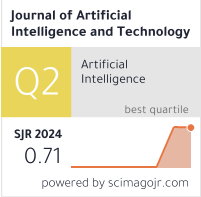Human Activity Recognition and Embedded Application Based on Convolutional Neural Network
DOI:
https://doi.org/10.37965/jait.2020.0051Keywords:
human activity recognition, convolutional neural network, STM32F767, STM32CubeMX-AIAbstract
With the improvement of people's living standards, the demand for health monitoring and exercise detection is increasing. It is of great significance to study human activity recognition methods that are different from traditional feature extraction methods. This article uses convolutional neural network algorithms in deep learning to automatically extract features of activities related to human life. It uses a stochastic gradient descent algorithm to optimize the parameters of the convolutional neural network. The trained network model is compressed on STM32CubeMX-AI. Finally, this article introduces the use of neural networks on embedded devices to recognize six human activities of daily life, such as sitting, standing, walking, jogging, upstairs and downstairs. The acceleration sensor related to human activity information is used to obtain the relevant characteristics of the activity, thereby solving the human activity recognition (HAR) problem. The network structure of the constructed CNN model is shown in Figure 1, including an input layer, two convolutional layers and two pooling layers. After comparing the average accuracy of each set of experiments and the test set of the best model obtained from it, the best model is then selected.
Metrics
Published
How to Cite
Issue
Section
License
Copyright (c) 2021 Authors

This work is licensed under a Creative Commons Attribution 4.0 International License.





